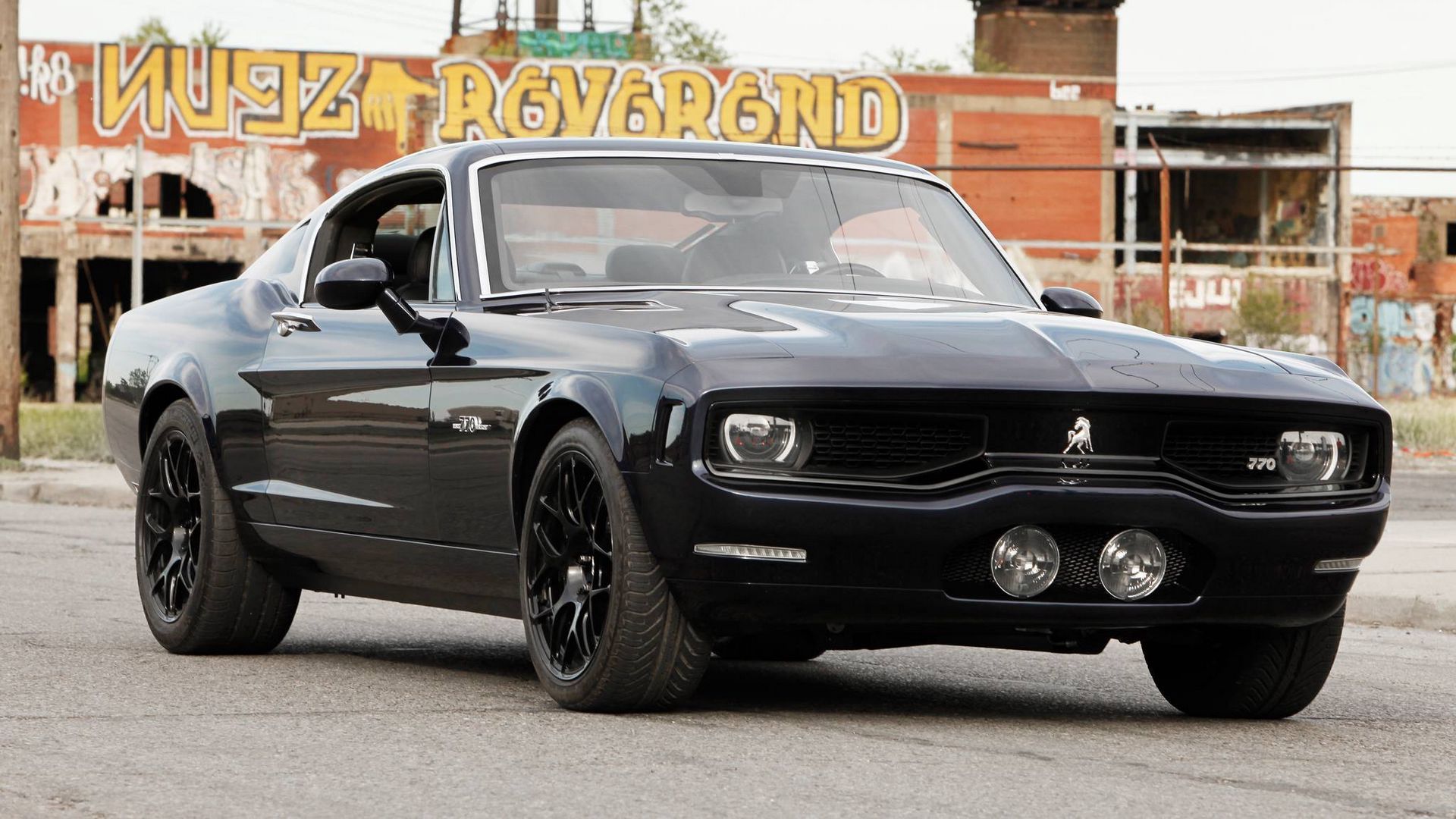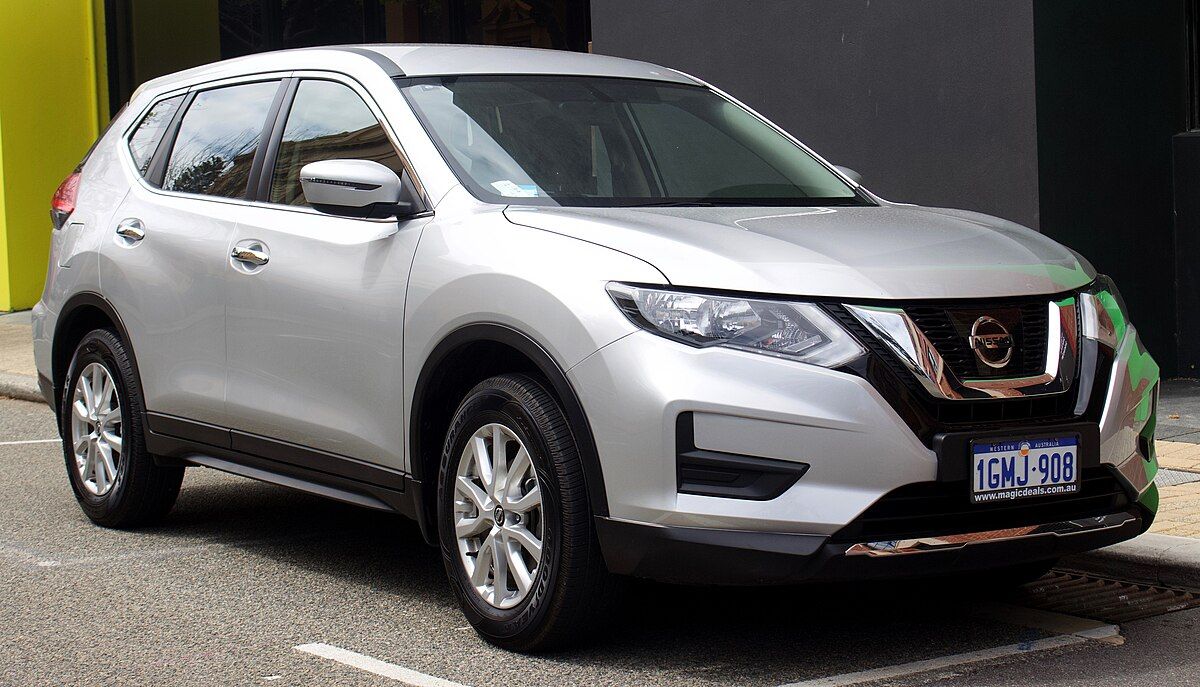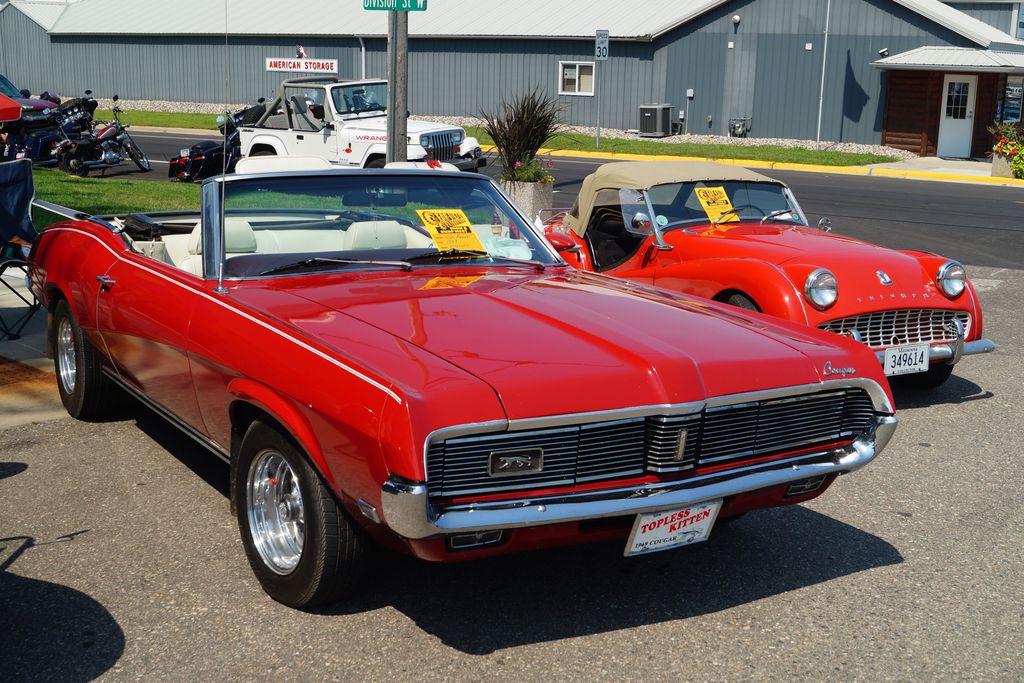
In the fast-paced world of automotive enthusiasm, where classic car prices have skyrocketed, many iconic machines now sit out of reach for the average enthusiast. It’s a challenging time for those who dream of owning a piece of automotive history without breaking the bank. However, there’s a silver lining, a hidden gem for the discerning collector: the modern classic. These vehicles, as eloquently put by Top Gear’s Richard Hammond, are “either too new or too underrated to be classics now, but one day, they might be.”
This sentiment perfectly captures the essence of our quest. We’re not just looking for old cars; we’re seeking those special, often overlooked, modern muscle machines that possess the inherent qualities of future collectibles. They represent a unique intersection of performance, design, and historical significance, often marking the end of an era or the beginning of a groundbreaking new one. Our selection process is rooted in a deep appreciation for what these cars represent, examining their driving experience as reported by experts and tracking their pricing trends on reputable car market evaluation websites like Classic.com.
Indeed, despite the challenges of rising fuel prices, congested roads, and stringent environmental regulations, we are arguably living in a golden age for the automotive industry. Never before have so many incredible cars, fascinating models, and potent engines been accessible to the public. Car historians often draw parallels between current times and the muscle car frenzy of the late 1960s. Yet, today’s car culture is a global phenomenon, offering eager buyers an unprecedented array of choices across all segments – from roadsters and hot hatches to exotics and, of course, the ever-thrilling modern muscle cars. The question then becomes, which of these modern marvels possess that elusive “special something” to ensure their place in history as future classics? This in-depth look will answer that, presenting a carefully curated list of modern muscle cars guaranteed to become sought-after pieces of automotive history.
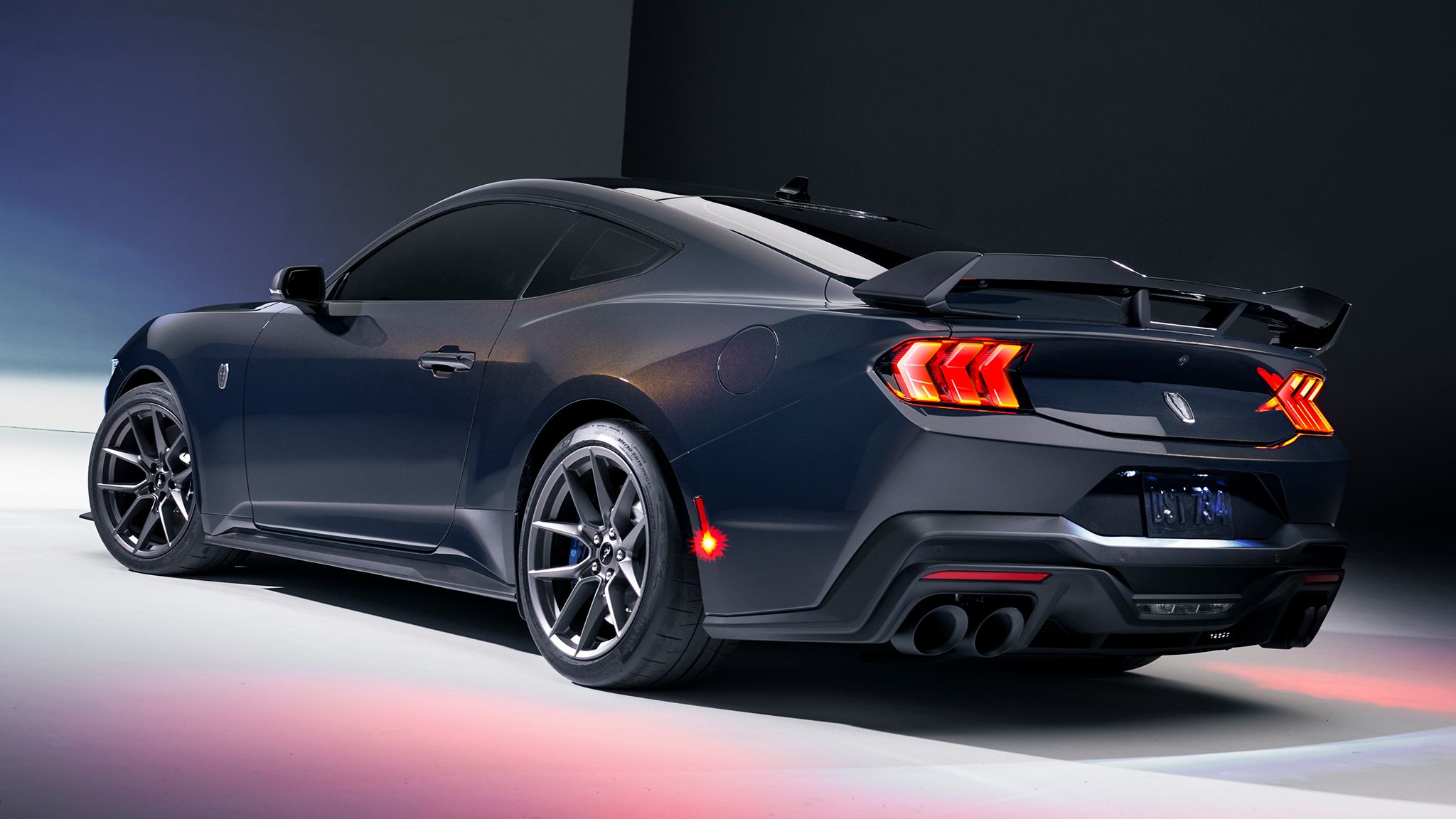
1. **2025 Ford Mustang Dark Horse**The 2025 Ford Mustang Dark Horse arrives as a beacon of traditional muscle car spirit in an automotive landscape increasingly dominated by electrification. It stands out, particularly as Dodge and Chevrolet pivot towards electric muscle, positioning Ford to potentially earn the distinction of producing both the first and, crucially, the last truly traditional muscle car for an era. This makes the Dark Horse not just another Mustang, but a significant historical marker, destined for future classic status as a testament to the internal combustion engine’s glorious swansong in this iconic form.
Underneath its distinctively sculpted hood, the Dark Horse boasts a modified 5.0L Coyote V8 engine, a powerplant tuned with precision for both exhilarating street performance and demanding track use. This naturally aspirated engine, a rarity in an age of forced induction, promises a visceral driving experience that purists cherish. Coupled with a unique front fascia and aggressive 19-inch wheels, its design visually reinforces its formidable capabilities and sets it apart from other Mustang variants, striking a masterful balance between timeless muscle car aesthetics and contemporary performance enhancements. The Dark Horse embodies the raw, unadulterated power and classic coupe design that have long defined the true muscle car, a combination that is rapidly becoming a relic of the past.
Moreover, the context highlights that as of now, there is no new GT500 or GT350 available, solidifying the Dark Horse’s role as the final Mustang to feature a big V8, a manual transmission, and the quintessential classic coupe design. This singular position in the Mustang lineage virtually guarantees its collectibility. While the internal combustion Mustang’s indefinite future is uncertain, this specific model, by virtue of being presented as the ultimate traditional V8 offering before potential electrification, ensures its place as a guaranteed future classic, appealing strongly to enthusiasts who recognize the closing chapter of an automotive legend.
Car Model Information: 2017 Ford Mustang GT Premium
Name: Ford Mustang
Caption: 2018 Ford Mustang GT 5.0
Aka: Ford T5 (Germany)
Manufacturer: Ford Motor Company
Production: March 1964 – present
ModelYears: 1965–present
Class: Unbulleted list
BodyStyle: Unbulleted list
Layout: Front-engine, rear-wheel-drive layout
Categories: 1970s cars, 1980s cars, 1990s cars, 2+2 coupés, 2000s cars
Summary: The Ford Mustang is a series of American automobiles manufactured by Ford. In continuous production since 1964, the Mustang is currently the longest-produced Ford car nameplate. Currently in its seventh generation, it is the fifth-best selling Ford car nameplate. The namesake of the “pony car” automobile segment, the Mustang was developed as a highly styled line of sporty coupes and convertibles derived from existing model lines, initially distinguished by “long hood, short deck” proportions.
Originally predicted to sell 100,000 vehicles yearly, the 1965 Mustang became the most successful vehicle launch since the 1927 Model A. Introduced on April 17, 1964 (16 days after the Plymouth Barracuda), over 400,000 units were sold in its first year; the one-millionth Mustang was sold within two years of its launch. In August 2018, Ford produced the 10-millionth Mustang; matching the first 1965 Mustang, the vehicle was a 2019 Wimbledon White convertible with a V8 engine.
The success of the Mustang launch led to multiple competitors from other American manufacturers, including the Chevrolet Camaro and Pontiac Firebird (1967), AMC Javelin (1968), and Dodge Challenger (1970). It also competed with the Plymouth Barracuda, which was launched around the same time. The Mustang also had an effect on designs of coupes worldwide, leading to the marketing of the Toyota Celica and Ford Capri in the United States (the latter, by Lincoln-Mercury). The Mercury Cougar was launched in 1967 as a unique-bodied higher-trim alternative to the Mustang; during the 1970s, it included more features and was marketed as a personal luxury car.
From 1965 until 2004, the Mustang shared chassis commonality with other Ford model lines, staying rear-wheel-drive throughout its production. From 1965 to 1973, the Mustang was derived from the 1960 Ford Falcon compact. From 1974 until 1978, the Mustang (denoted Mustang II) was a longer-wheelbase version of the Ford Pinto. From 1979 until 2004, the Mustang shared its Fox platform chassis with 14 other Ford vehicles (becoming the final one to use the Fox architecture). Since 2005, Ford has produced two generations of the Mustang, each using a distinct platform unique to the model line.
Through its production, multiple nameplates have been associated with the Ford Mustang series, including GT, Mach 1, Boss 302/429, Cobra (separate from Shelby Cobra), and Bullitt, along with “5.0” fender badging (denoting 4.9 L OHV or 5.0 L DOHC V8 engines).
Get more information about: Ford Mustang
Buying a high-performing used car >>>
Brand: Ford Model: Mustang
Price: $30,000 Mileage: 50,437 mi.
Read more about: Black is the New Gold: Inside the World of Rolls-Royce’s Black Badge Owners and Their Rebellious Spirit

2. **2024 Dodge Charger Daytona Scat Pack**The 2024 Dodge Charger Daytona Scat Pack represents a monumental shift, marking itself as the trailblazing “first and only fully electric muscle car” set to electrify the streets upon its launch in 2024. This model isn’t merely a new addition; it’s a revolutionary replacement, stepping into the formidable shoes of the HEMI-powered Challenger and the outgoing Charger lineup. This pioneering status alone embeds it with an undeniable future classic potential, as it dares to redefine what a muscle car can be in an electrified era, embodying Dodge’s ambitious stride into the unknown.
Dodge has made considerable efforts to ensure that this pioneering electric muscle car preserves the spirit and soul of classic muscle while embracing an entirely electrified future. Boasting a staggering 670 horsepower, the Daytona Scat Pack is designed for visceral acceleration, achieving 0 to 60 mph in a blistering 3.3 seconds and targeting an impressive quarter-mile time of 11.5 seconds. The inclusion of all-wheel drive further enhances its strong performance characteristics, making it appealing for enthusiasts who crave both blistering speed and practical control. Its starting price, near $58,000, positions it as a remarkably competitive and accessible option for those looking to experience cutting-edge performance within the modern muscle car segment.
Visually, the Charger Daytona Scat Pack embraces a retro-inspired two-door Charger design, harkening back to the beloved lines of the 1960s and ’70s, ensuring it offers more than just raw power – it delivers a potent dose of nostalgia. The coupe silhouette and an aggressive front wing strongly reinforce its inherent muscle car DNA. Furthermore, Dodge has innovatively addressed the traditional driving experience, aiming to replicate it through a uniquely engineered exhaust and transmission system, a bold move to win over die-hard muscle car enthusiasts. Riding on the robust STLA Large platform, which is capable of delivering up to 500 miles per charge, this vehicle is not only a performance powerhouse but also a practical, long-range electric machine. Whether it fully converts purists remains to be seen, but its ambition and pioneering status unquestionably secure its place as a guaranteed future classic.
Car Model Information: 2023 Dodge Challenger SRT Hellcat
Name: Dodge Charger
Caption: 2024 Dodge Charger Daytona R/T
Manufacturer: Dodge
Production: 2024–present
ModelYears: 2024–present
Assembly: Windsor, Ontario
Designer: Ralph Gilles
Class: Full-size car
BodyStyle: liftback
Layout: ubl
Platform: STLA Large
Engine: ubl
Transmission: ubl
Motor: ubl
Range: ubl
Battery: Lithium nickel manganese cobalt oxides
Wheelbase: cvt
Length: cvt
Width: cvt
Height: cvt
Weight: cvt
Predecessor: ubl
Categories: All-wheel-drive vehicles, All stub articles, Articles with short description, Cars introduced in 2024, Coupés
Summary: The eighth-generation Dodge Charger is a full-size car manufactured and marketed by Stellantis North America under the Dodge marque. It was introduced as a production model in March 2024, following appearances of nearly identical concept cars in 2022. It is the first Dodge vehicle to be available with a battery electric powertrain, marketed as the Charger Daytona. A gasoline-powered version called the Charger Sixpack will be available in late 2025, equipped with the 3.0-liter inline-six Hurricane engine.
The eighth-generation Charger is available in three-door and five-door body styles, with the former acting as a replacement to the third-generation Challenger.
Get more information about: Dodge Charger (2024)
Buying a high-performing used car >>>
Brand: Dodge Model: Charger Daytona Scat Pack
Price: $72,500 Mileage: 2,818 mi.
Read more about: The Elite Six: Modern Muscle Cars That Deliver Unapologetically Low Fuel Economy
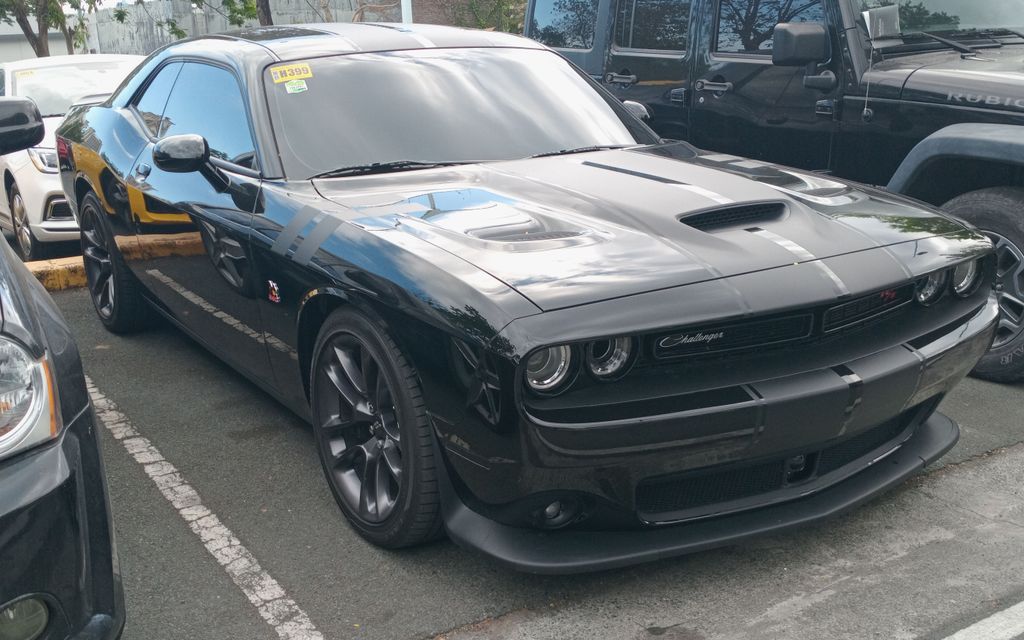
3. **2023 Dodge Challenger R/T**The 2023 Dodge Challenger R/T stands as a poignant symbol of a closing chapter, a model that, despite remaining largely unchanged for nearly a decade and a half, is now slated for discontinuation. Its impending departure imbues it with an immediate and significant future classic status, representing the culmination of a modern muscle car era characterized by raw power and unapologetic retro styling. This final production run is a powerful send-off, making these specific models highly sought after by collectors and enthusiasts who recognize the end of an icon.
This particular trim of the Challenger offers a superb balance of classic muscle car aesthetics with modern performance, a combination that has endeared it to a vast audience. Equipped with a robust 5.7-liter V8 engine, it delivers a healthy 375 horsepower, providing strong acceleration and that deeply satisfying exhaust note that is synonymous with American muscle. What makes the R/T an especially compelling future classic is its accessibility; it achieves this potent performance and iconic style without commanding the exorbitant prices of its top-tier, Hellcat-badged siblings. This affordability makes it a smart investment for those looking to secure a piece of this departing legacy.
Beyond its powerful engine, the 2023 Challenger R/T features a retro-inspired interior thoughtfully updated with modern technology, ensuring it remains highly usable for daily driving. This blend of nostalgic charm and contemporary convenience elevates its appeal, cementing its position as a solid choice for muscle car enthusiasts seeking affordability and genuine power. With Dodge’s high-horsepower lineup transitioning to an all-electric future and the Charger Daytona EV set to debut, the likelihood of the Challenger making an internal combustion return seems slim. This definitive end to an era for the Challenger, especially in an affordable, V8-powered R/T trim, guarantees its appreciation as a cherished future classic, a last roar before the electric silence.
Car Model Information: 2023 Dodge Challenger SRT Hellcat
Name: Dodge Challenger (1970)
Production: 1969–1974
ModelYears: 1970–1974
Successor: ubl
Caption: 1970 Challenger R/T
Manufacturer: Dodge
Wheelbase: cvt
Length: cvt
Width: cvt
Height: cvt
Categories: 1970s cars, All articles lacking reliable references, All articles needing additional references, Articles lacking reliable references from November 2014, Articles needing additional references from April 2024
Summary: The Dodge Challenger is an automobile produced by American automobile manufacturer Dodge. The first use of the Challenger name by Dodge was in 1959 for marketing a “value version” of the full-sized Coronet Silver Challenger.
From model years 1970 to 1974, the first generation Dodge Challenger pony car was built using the Chrysler E platform in hardtop and convertible body styles sharing major components with the Plymouth Barracuda.
Get more information about: Dodge Challenger (1970)
Buying a high-performing used car >>>
Brand: Dodge Model: Challenger R/T
Price: $72,500 Mileage: 2,818 mi.
Read more about: Sacramento Manhunt Concludes: Three Suspects in Custody After High-Speed Chase and Shooting
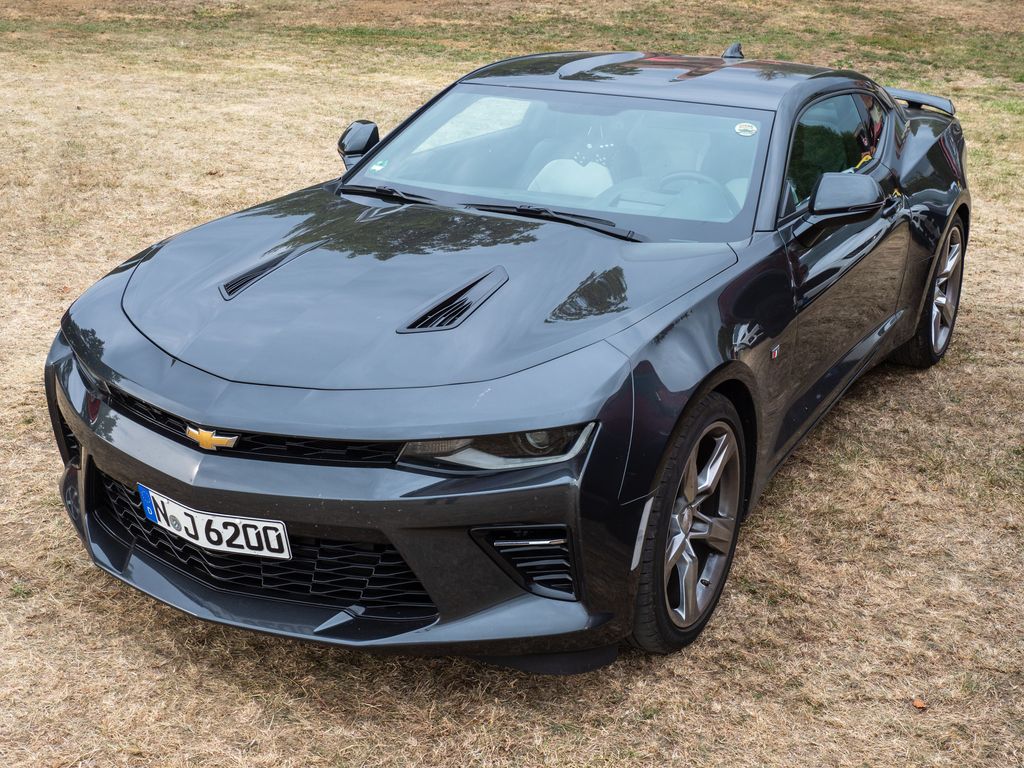
4. **Fifth-generation Chevrolet Camaro V8**The fifth-generation Chevrolet Camaro V8 represents an exceptionally affordable entry point into the thrilling world of modern muscle car ownership, making it a prime candidate for future classic status. Emerging after a hiatus, the fifth-generation (produced from 2010 onwards) marked a powerful revival of the iconic nameplate, bringing back the aggressive styling and V8 potency that fans craved. Its accessibility, with many V8 models commonly found for less than $20,000 on the used market, means that enthusiasts can experience genuine muscle car performance and styling without a significant financial outlay, making it an intelligent investment before prices inevitably climb.
These vehicles are celebrated for delivering strong performance, thanks to their robust V8 engines, and for retaining the unmistakable classic muscle car styling that pays homage to their heritage. The driving dynamics were praised, reminding enthusiasts of the exhilaration of American performance cars. While buyers should anticipate higher mileage examples due to the model’s age and popularity, the inherent value and driving pleasure offered by these cars remain undiminished. They offer a tangible connection to the muscle car wars of the 2000s, a period when retro models made a comeback and sparked a second wave of competition among the “Big Three.”
Considering that General Motors is bringing production of the sixth-generation Camaro to an end with the 2024 model year, the entire ICE Camaro lineage becomes increasingly significant. While Chevrolet has hinted that “this is not the end of the Camaro’s story,” industry speculation strongly suggests that any future iteration will be an EV. This makes the existing V8-powered generations, particularly the popular and affordable fifth-gen, incredibly valuable as the last bastions of traditional internal combustion Camaro muscle. Their strong performance credentials, coupled with their attainable pricing and the uncertain electric future of the nameplate, firmly establish the fifth-generation Chevrolet Camaro V8 as a solid choice for enthusiasts on a budget seeking a guaranteed future classic.
Car Model Information: 2018 Chevrolet Camaro 1LS
Name: Chevrolet Camaro
Manufacturer: Chevrolet
Production: 1966–2002,2009–2023
ModelYears: 1967–2002,2010–2024
Class: Pony car
BodyStyle: coupe,convertible
Platform: GM F platform,GM Zeta platform,GM Alpha platform
Layout: Front-engine, rear-wheel-drive layout
Categories: 1970s cars, 1980s cars, 1990s cars, 2+2 coupés, 2000s cars
Summary: The Chevrolet Camaro is a mid-size American automobile manufactured by Chevrolet, classified as a pony car. It first went on sale on September 29, 1966, for the 1967 model year and was designed to compete with the Ford Mustang. The Camaro shared its platform and major components with the Firebird, produced by General Motors’ Pontiac division that was also introduced for the 1967 model year.
Four distinct generations of the Camaro were developed before production ended in 2002. The nameplate was revived on a concept car that evolved into the fifth-generation Camaro; production started on March 16, 2009.
Production of the sixth generation of the Camaro ended in December 2023, for the 2024 model year.
Get more information about: Chevrolet Camaro
Buying a high-performing used car >>>
Brand: Chevrolet Model: Camaro
Price: $19,125 Mileage: 69,196 mi.
Read more about: The Engines of Legend: How Iconic Vehicles Drive Cinematic Narratives and Automotive Innovation
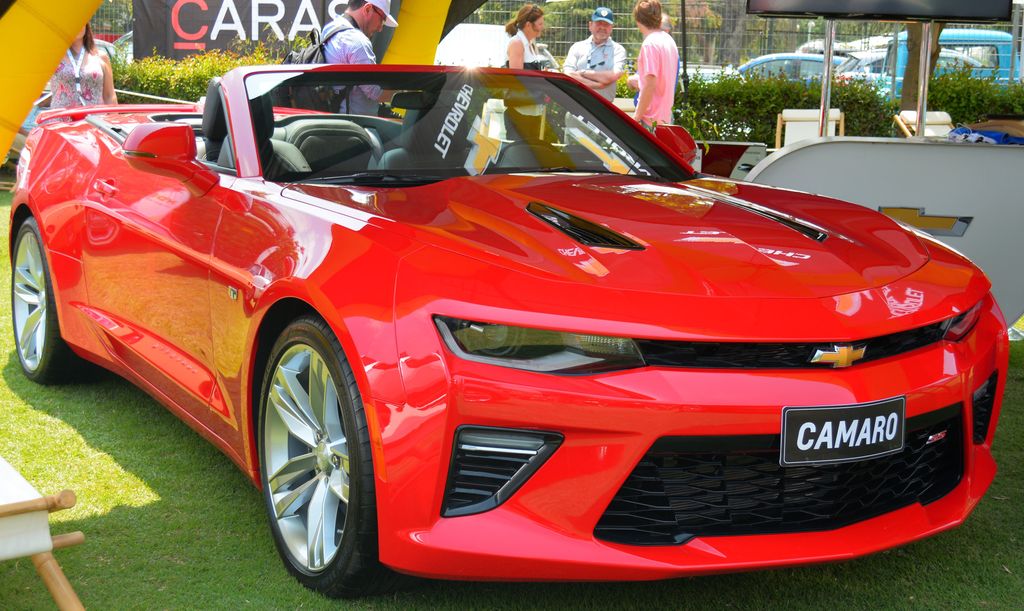
5. **2018 Chevrolet Camaro SS**The 2018 Chevrolet Camaro SS offers a compelling blend of potent performance, modern handling, and classic muscle car aesthetics, making it a standout choice among affordable future classics. This particular model year, part of the sixth-generation, boasts a formidable 6.2-liter V8 engine, churning out a impressive 455 horsepower. This level of power ensures a truly exhilarating driving experience, characterized by thrilling acceleration and a sonorous exhaust note that is pure muscle car symphony. Its contemporary engineering means it also benefits from superior handling dynamics compared to its predecessors, offering a more refined and engaging ride.
What truly elevates the 2018 Camaro SS into future classic contention, especially for those on a budget, is its current market value. Used models are relatively affordable compared to other muscle cars offering similar power and performance capabilities. This accessibility allows a broader range of enthusiasts to acquire a modern, high-performance V8 muscle car without the prohibitive price tag often associated with such machines. It represents an excellent investment for those seeking to enjoy a robust driving experience today, while also anticipating future appreciation as the landscape of performance cars shifts towards electrification.
Moreover, the looming discontinuation of the sixth-generation Camaro underscores the future classic potential of these recent V8 models. With production wrapping up and strong speculation pointing towards an electric future for the Camaro nameplate, the 2018 SS stands as a prime example of its final, fully internal combustion era. It combines all the desirable traits: immense power, sharp looks, a fantastic driving experience, and a price point that is still within reach for many. Its enduring popularity among buyers seeking power and style without a high price tag, coupled with its position at the twilight of the ICE Camaro, firmly cements the 2018 Chevrolet Camaro SS as a guaranteed future classic, ripe for collecting before its values inevitably soar.
Navigating the thrilling currents of automotive history, we continue our journey beyond the initial set of groundbreaking machines. We delve deeper into the realm of affordable future classics, unearthing five more modern muscle marvels that promise not just exhilarating drives today, but also a burgeoning legacy tomorrow. These vehicles, each with its unique blend of power, presence, and historical significance, represent critical junctures in the evolution of performance cars, making them prime targets for discerning collectors.
Car Model Information: 2018 Chevrolet Camaro 1LS
Name: Chevrolet Camaro
Manufacturer: Chevrolet
Production: 1966–2002,2009–2023
ModelYears: 1967–2002,2010–2024
Class: Pony car
BodyStyle: coupe,convertible
Platform: GM F platform,GM Zeta platform,GM Alpha platform
Layout: Front-engine, rear-wheel-drive layout
Categories: 1970s cars, 1980s cars, 1990s cars, 2+2 coupés, 2000s cars
Summary: The Chevrolet Camaro is a mid-size American automobile manufactured by Chevrolet, classified as a pony car. It first went on sale on September 29, 1966, for the 1967 model year and was designed to compete with the Ford Mustang. The Camaro shared its platform and major components with the Firebird, produced by General Motors’ Pontiac division that was also introduced for the 1967 model year.
Four distinct generations of the Camaro were developed before production ended in 2002. The nameplate was revived on a concept car that evolved into the fifth-generation Camaro; production started on March 16, 2009.
Production of the sixth generation of the Camaro ended in December 2023, for the 2024 model year.
Get more information about: Chevrolet Camaro
Buying a high-performing used car >>>
Brand: Chevrolet Model: Camaro
Price: $19,125 Mileage: 69,196 mi.
Read more about: Classic Cars Skyrocketing in Value: 26 Models Worth Investing In
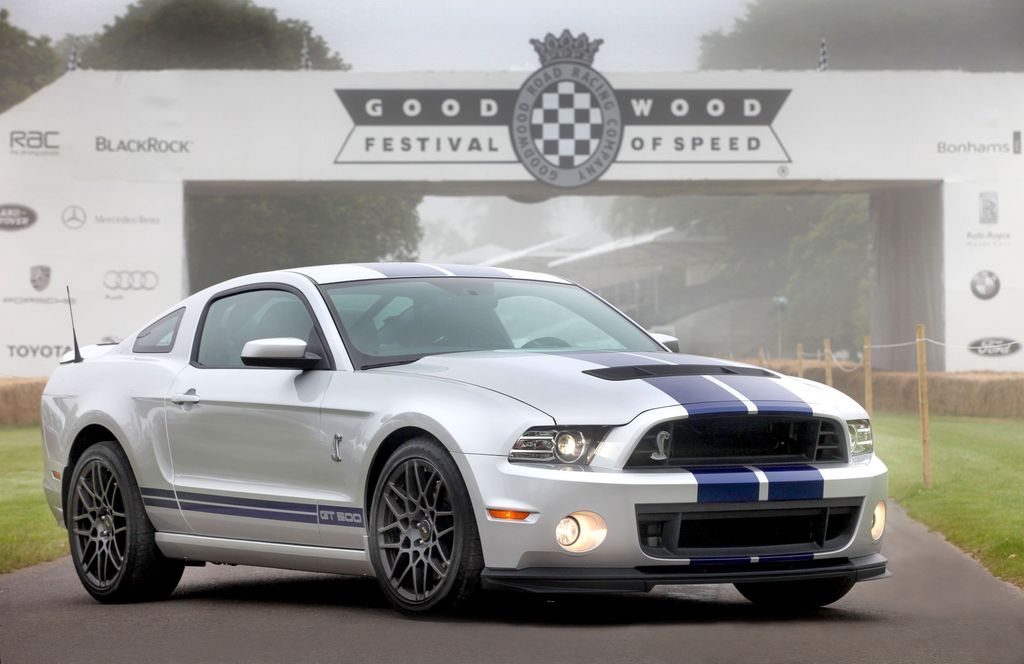
6. **Shelby GT500 (S197-II)**The reintroduction of the Shelby GT500 during the S197 Mustang generation marked a thrilling resurgence of a legendary nameplate, one deeply intertwined with American V8 power and an iconic performance heritage. While the initial S197 GT500 models were undoubtedly impressive, it is the final, facelifted iterations from this generation, specifically the S197-II, that truly stand out as prime candidates for guaranteed future classic status. These particular models carry immense historical weight, famously being the last cars that the revered Carroll Shelby himself personally endorsed and signed off on. This direct connection to the automotive icon bestows upon them an unparalleled significance, transforming them from mere high-performance Mustangs into cherished, tangible artifacts of a golden era.
At the heart of these formidable machines throbbed a truly monstrous 5.8-liter supercharged V8 engine, a masterclass in American engineering that unapologetically delivered raw, unadulterated power. This immense powerplant unleashed a staggering 662 horsepower, translating into an absolutely exhilarating, albeit demanding, driving experience that pushed the boundaries of what a road-legal car could offer. As “MotorTrend” vividly recounted, these cars were “pretty scary to drive, but also pretty spectacular,” a dual nature that perfectly captures their essence. They were designed to dominate both the drag strip and the open road, providing a visceral thrill and an auditory symphony that few other vehicles, then or now, could genuinely rival. The sheer force and the thrilling feedback from behind the wheel ensured that every drive was an unforgettable event, making a profound statement about power and presence.
Consequently, the S197-II Shelby GT500 is not just appreciating; it is rapidly ascending in collectibility, cementing its position as a future classic that astute enthusiasts are already seeking. It is definitively recognized as the “last old-school and muscle car-like iteration” of the GT500, a critical distinction in an automotive landscape increasingly characterized by electrification and more restrained performance. The context makes it clear that this is “one modern Mustang that won’t stay cheap,” a powerful affirmation of its inherent value and its inevitable trajectory towards becoming a highly sought-after collectible. This particular model serves as a magnificent relic of a bygone era of pure American muscle, a testament to horsepower, heritage, and the enduring vision of Carroll Shelby himself, ensuring its place in the pantheon of automotive legends.
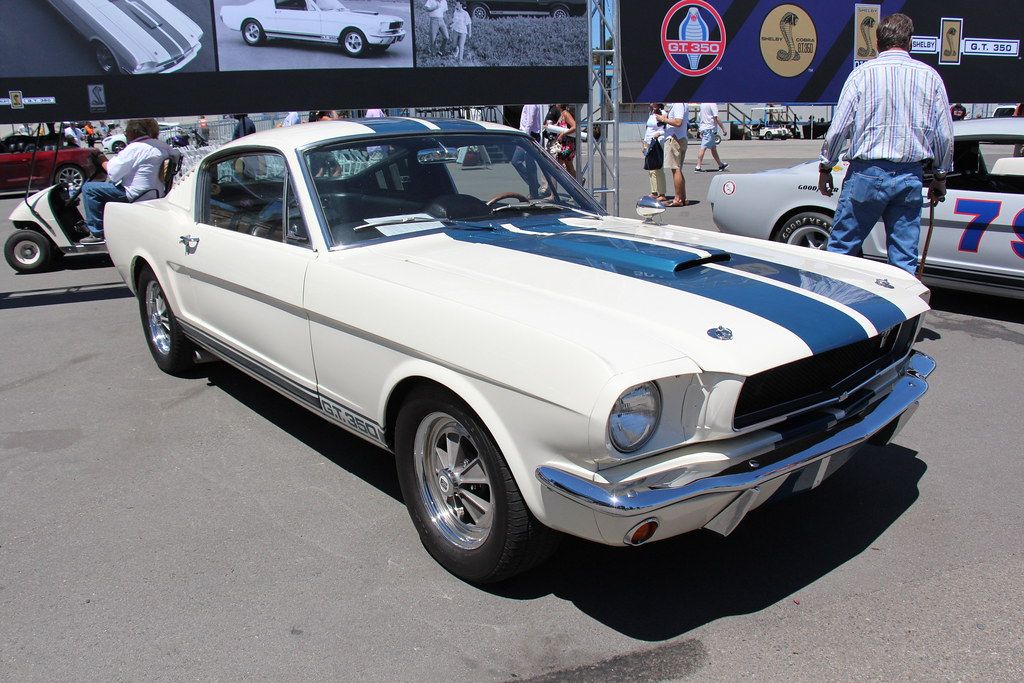
7. **Ford Mustang Shelby GT 350**For the enthusiast who craves a “classic, screamer Mustang with Shelby heritage” but also desires the precision of modern technology and the thrill of “unbelievable V8 performance,” the Ford Mustang Shelby GT350R stands as an impeccable choice, a true masterpiece of modern muscle. This exceptional vehicle masterfully blurs the lines between raw, traditional American power and sophisticated, track-honed precision, delivering an experience that is both visceral and refined. While its underpinnings are based on the robust Mustang GT, Ford poured considerable resources into its development, ensuring that critical components like the suspension, aerodynamic package, and most notably, its groundbreaking engine, were entirely new and meticulously engineered for peak performance.
The undisputed crown jewel of the Shelby GT350R is its phenomenal “Voodoo” engine, a naturally aspirated 5.2-liter V8 that produces an impressive 526 horsepower and 429 lb-ft of torque. What truly elevates this powerplant into the realm of legend is its innovative flat-plane crank technology, a sophisticated engineering marvel typically reserved for high-performance exotics such as those from Ferrari. This revolutionary design allows the substantial V8 to rev with astonishing speed and intensity, “scream[ing] to almost 9,000 rpm” and producing an intoxicating soundtrack utterly unlike any muscle car that came before it. The context highlights that this marked “the first time a muscle car has had such an advanced engine,” signifying a bold leap forward in American performance engineering and setting a new benchmark for the genre.
The significant investment and engineering prowess channeled into the Shelby GT350R are unequivocally validated by its breathtaking performance, including a blistering 0 to 60 mph acceleration in just 3.9 seconds. However, it is crucial to understand that mere statistics cannot fully capture the profound and exhilarating driving experience this car offers. The GT350R transcends the conventional muscle car definition; it is, without a doubt, a “pure sports car,” celebrated for its “fantastic driving dynamics and experience to the driver.” Its remarkable precision and exceptional cornering capabilities position it far closer to elite track machines like the Porsche GT3 than to the more traditional, unrefined Mustangs of previous generations. This unparalleled fusion of revered heritage, groundbreaking innovation, and track-focused performance unequivocally secures its status as “one of the best sports cars Ford has made in recent years,” making it a certain and highly sought-after future classic.
Car Model Information: 2023 Dodge Challenger SRT Hellcat
Name: Shelby Mustang
Caption: 1965 Shelby Mustang GT350
Manufacturer: Unbulleted list
Aka: Unbulleted list
Production: Unbulleted list
Designer: John Chun
Assembly: Unbulleted list
Class: Unbulleted list
Platform: Unbulleted list
Related: Ford Mustang (first generation),Ford Mustang (fifth generation)
Layout: Front-engine, rear-wheel-drive layout
Categories: 1970s cars, 2000s cars, 2010s cars, 2020s cars, All Wikipedia articles written in American English
Summary: The Shelby Mustang is a high-performance variant of the Ford Mustang built by Shelby American from 1965 to 1967 and by the Ford Motor Company from 1968 to 1970.
In 2005, Ford revived the Shelby nameplate for a high-performance model of the fifth-generation Ford Mustang.
Get more information about: Shelby Mustang
Buying a high-performing used car >>>
Brand: Ford Model: Mustang Shelby GT350
Price: $72,500 Mileage: 2,818 mi.
Read more about: Classic Cars Skyrocketing in Value: 26 Models Worth Investing In
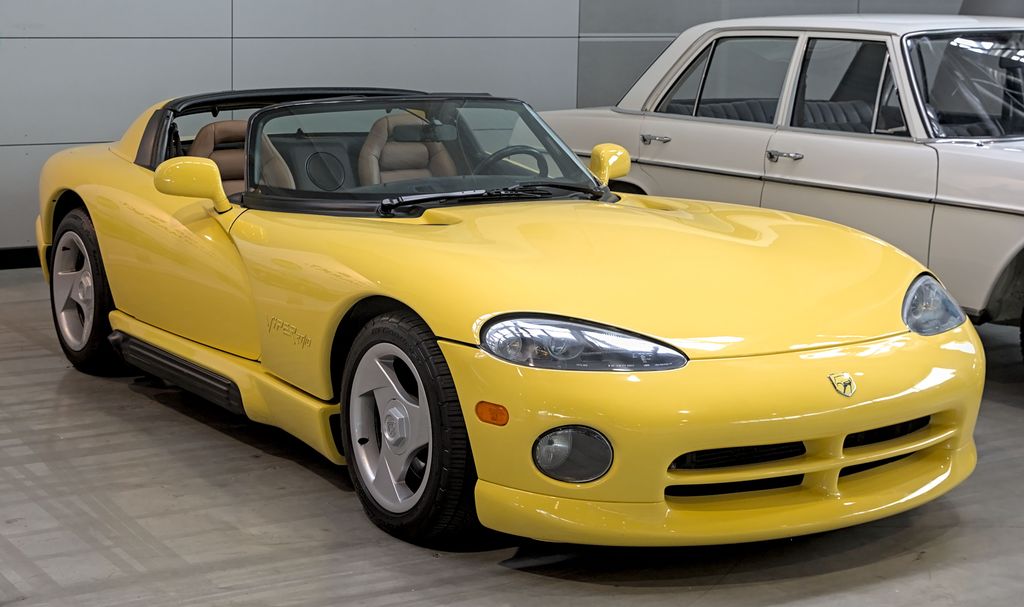
8. **Dodge Viper**The Dodge Viper, with its unmistakable, aggressive silhouette and an unapologetic dedication to brute force performance, stands as an “extremely obvious” and compelling candidate for future classic status. This automotive titan enjoyed an exhilarating 25-year production run, captivating car enthusiasts across the globe before its eventual discontinuation in 2017. Even after production officially ceased, a limited number of leftover examples continued to find eager buyers, a powerful testament to its enduring allure and the deep affection it commanded. The Viper is rightfully enshrined as “one of America’s proudest automotive achievements,” a raw, untamed marvel that perfectly encapsulated the audacious spirit of high-displacement, no-compromise performance.
The beating heart of the Viper legend, and indeed its most defining characteristic, is its colossal “8.4-liter (!) naturally-aspirated V10” engine. This monumental powerplant, an absolute rarity in modern automotive history, is of such immense scale and character that the context explicitly states there is simply “no way that we will see another sports car with an 8.4-liter (!) naturally-aspirated V10 under the hood” again, primarily due to ever-tightening emissions regulations. Throughout its entire illustrious lifespan, the Viper remained fiercely committed to a purist’s driving philosophy, exclusively offering power through its rear wheels and, crucially, only via a manual transmission. This unyielding focus on an unfiltered, direct driving experience meant that it genuinely “takes a serious level of driving skill to get the most out of a Viper,” contributing to its well-earned reputation for “sheer insanity” that only amplified its legendary, almost mythical, allure.
The unique, uncompromised characteristics of the Dodge Viper, ranging from its gargantuan V10 engine to its steadfast adherence to a pure, manual, rear-wheel-drive driving philosophy, undeniably ensure its firm trajectory towards becoming a revered classic in the annals of automotive history. It symbolizes a definitive closing chapter in the epic saga of the American performance car, a bold and unbridled declaration against an increasingly homogenized and regulated automotive landscape. Its inherent rarity, coupled with its prodigious power and the profound challenge it consistently presented to drivers, irrevocably guarantees its appreciation as a cherished piece of history. The Viper stands as an icon that will undoubtedly command significant attention and escalate in value among discerning collectors who deeply recognize its profound impact and truly singular, uncompromising nature.
Car Model Information: 2017 Dodge Viper ACR
Name: Dodge Viper
Caption: 2013 SRT Viper GTS Launch Edition
Manufacturer: Dodge
Production: 1991–2006,2007–2017
Assembly: Detroit,Michigan
Class: Sports car
BodyStyle: liftback,coupe
Layout: Longitudinal engine,Front mid-engine, rear-wheel drive layout
Engine: Viper engine,{{convert,488,cuin,L,abbr=on,1,order=flip,lk=on
Abbr: on
Order: flip
Powerout: SR-I and II:,{{convert,400,hp,PS kW,0,abbr=on,lk=on
Lk: on
ModelYears: 1992-2006,2008-2017
Categories: 1990s cars, 2000s cars, 2010s cars, All accuracy disputes, All articles with unsourced statements
Summary: The Dodge Viper is a sports car that was manufactured by Dodge (by SRT for 2013 and 2014), a division of American car manufacturer Chrysler from 1992 until 2017, having taken a brief hiatus in 2007 and from 2011 to 2012. Production of the two-seat sports car began at New Mack Assembly Plant in 1991 and moved to Conner Avenue Assembly Plant in October 1995.
Although Chrysler considered ending production because of serious financial problems, on September 14, 2010, then–chief executive Sergio Marchionne announced and previewed a new model of the Viper for 2012. In 2014, the Viper was named number 10 on the “Most American Cars” list, meaning 75% or more of its parts are manufactured in the U.S. The Viper was eventually discontinued in 2017 after approximately 32,000 were produced over the 26 years of production.
The 0–60 mph (97 km/h) time on a Viper varies from around 3.5 to 4.5 seconds. Top speed ranges from 160 mph (260 km/h) to over 200 mph (320 km/h), depending on variant and year.
Get more information about: Dodge Viper
Buying a high-performing used car >>>
Brand: Dodge Model: Viper
Price: $274,998 Mileage: 14,178 mi.
Read more about: 1990s Automotive Icons: From Unconventional Classics to Coveted Collectibles
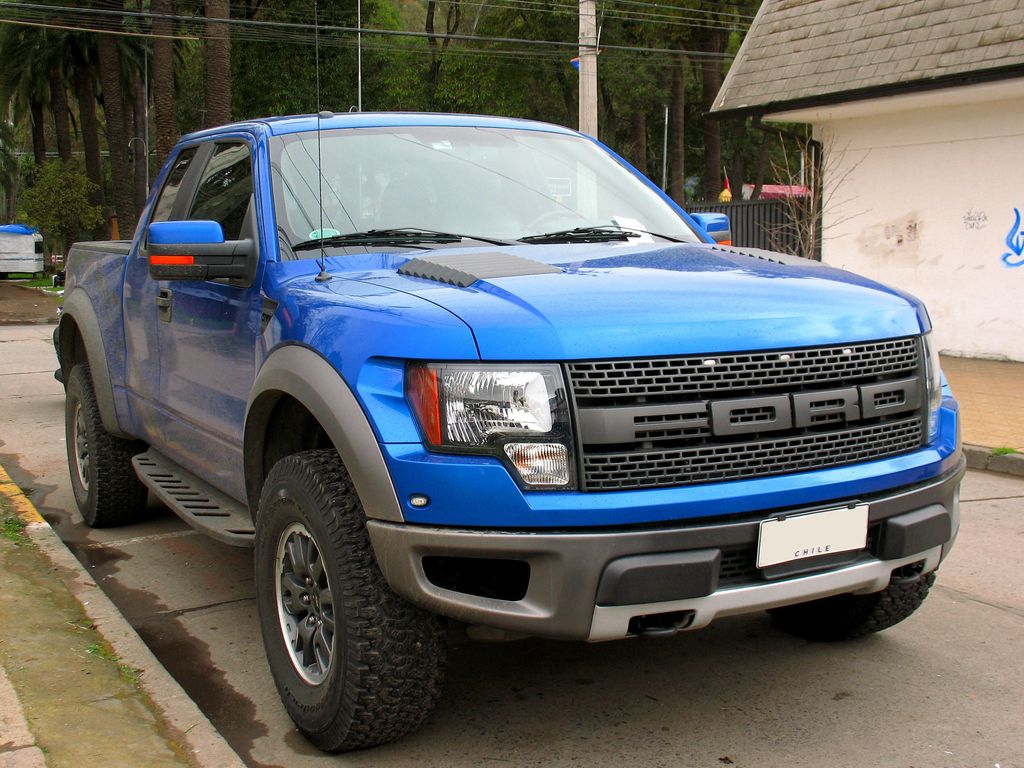
9. **Ford F-150 SVT Raptor (First Generation)**The first-generation Ford F-150 SVT Raptor is more than just a truck that’s gaining classic status; its “transition into a classic car has kinda already begun,” serving as an undeniable indicator of its immediate and long-lasting appeal. Born from an innovative vision in the late 2000s, this revolutionary vehicle was the ingenious brainchild of Ford’s Special Vehicle Team (SVT), who brilliantly conceived of transforming a standard F-150 into an “unstoppable factory off-roader — like a trophy truck for the road.” What initially seemed like an audacious gamble in the fiercely competitive automotive market proved to be an overwhelming triumph, successfully carving out an entirely new and thrilling segment of high-performance trucks and inspiring a wave of other manufacturers to enthusiastically follow its pioneering lead.
What truly solidified the Raptor’s legendary stature was its uncompromising performance, meticulously engineered for extreme off-road adventures executed at exhilarating speeds. This formidable machine was “originally exclusively available with V8 power,” delivering the kind of raw, guttural performance and unmistakable exhaust note that automotive enthusiasts universally craved. As “The Truth About Cars” astutely observed, the Raptor was not merely proficient at tackling rough terrain; it exceptionally excelled at “off-roading at high speeds!” This unparalleled capability, seamlessly integrated with its aggressively muscular stance and robust, purpose-built engineering, instantly propelled it to become “an instant hit” among a diverse spectrum of buyers, ranging from dedicated off-road aficionados to individuals simply seeking a truck with an unmatched level of presence and versatile capability.
As a direct consequence of its groundbreaking nature and widespread desirability, the market value of the first-generation F-150 SVT Raptor has exhibited remarkable stability, with “values have never really gone down on the used market.” This enduring strength in the market is a clear testament to its strong collector interest and its intrinsic long-term appeal. Its undeniable historical significance as “the first of its kind” to effectively establish and popularize the high-performance off-road truck segment, coupled with the crucial fact that it was “also the last regular Raptor with a V8,” unequivocally guarantees its long-term collectibility. These compelling factors ensure that its values will “stay high, and they might rise in some cases,” firmly establishing its position as a truly unique and highly sought-after future classic, a powerful testament to American ingenuity in the realm of high-performance utility vehicles.
Car Model Information: 2023 Dodge Challenger SRT Hellcat
Name: Raptor
Logo: Ford raptor logo.png
LogoSize: 200
Caption: Ford F-150 SVT Raptor (first generation)
Producttype: Pickup truck
Currentowner: Ford Motor Company
Country: United States
Introduced: [object Object]
Markets: Worldwide
Categories: 2010s cars, 2020s cars, All articles needing additional references, All articles with unsourced statements, Articles needing additional references from January 2025
Summary: The Raptor is a nameplate used by Ford for its high-performance pickup trucks and SUVs. In use since the 2010 model year, the Raptor is designated as the highest-performance version of the F-150, Ranger and Bronco. Drawing its name from both bird of prey and the velociraptor, the model line is intended as a street-legal counterpart of an off-road racing trophy truck. The F-150 Raptor is currently in its third generation; the Ranger Raptor was introduced in 2019 (in markets outside of North America) while the Bronco Raptor was released in late 2021.
Optimized for off-road use, the Raptor is fitted with four-wheel drive as standard equipment, a mid-travel suspension system, and all-terrain tires. The model is also equipped with the most powerful engines available in the F-150/Ranger lines. Along with wider fenders, the Raptor is fitted with its own grille, replacing the Ford Blue Oval emblem with large “FORD” lettering in the grille.
Get more information about: Ford Raptor
Buying a high-performing used car >>>
Brand: Ford Model: F-150 SVT Raptor
Price: $72,500 Mileage: 2,818 mi.
Read more about: Is Your Car a ‘Reliability King’? 15 Vehicles That Last for 200000 Miles or More
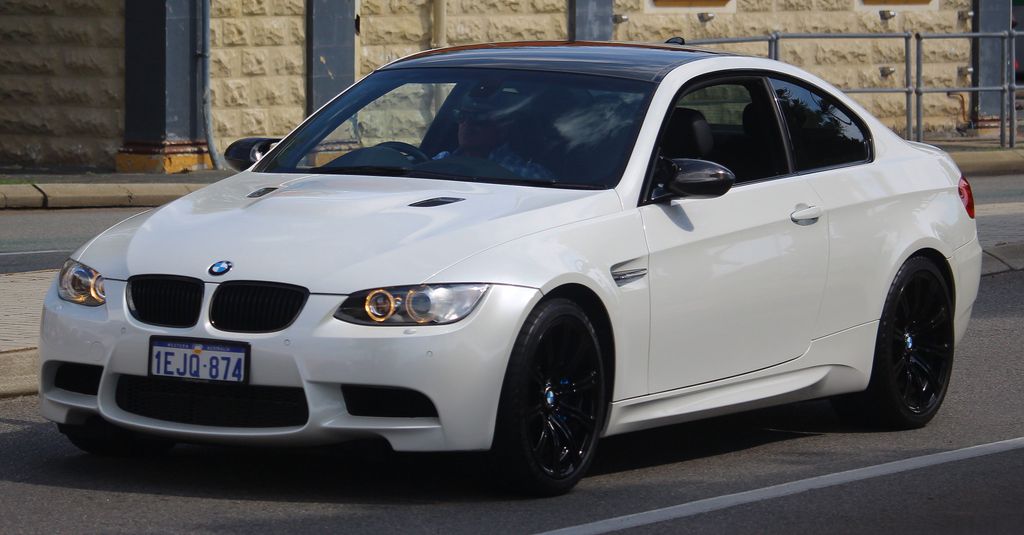
10. **BMW M3 (E92)**The E92 generation of the BMW M3 stands as a truly exceptional and memorable product of an exciting period in the 2000s, an era when many prominent automakers, including BMW, wholeheartedly embraced adventurous and immensely powerful engine designs. Among all the celebrated iterations of the iconic M3, the E92 holds a particularly unique and significant place in the broader automotive narrative, frequently lauded as “one of the most talked about iterations of the performance sedan,” and for a multitude of very compelling reasons. Its distinct character, marked by a departure from the traditional M3 formula, set it apart from both its predecessors and its successors, establishing a bold and unforgettable chapter in the M3’s illustrious lineage.
The very essence that defines the E92 M3 and unequivocally cements its future classic status is its glorious V8 engine, an engineering anomaly and a singular high point in the M3’s storied history. Unlike the four-cylinder E30 or the various highly praised six-cylinder models that both came before and followed it, the E92 was the “only example of the breed to use V8 power.” This isn’t just any V8; it’s a meticulously crafted 4.0-liter, naturally aspirated powerplant that was designed to be incredibly high-revving and exhilarating, capable of producing an intoxicating soundtrack as it “scream[s] its way to 8,300 RPM.” As “Drive Australia” enthusiastically confirmed, it is “an especially good car to drive,” offering a profoundly visceral and engaging experience that deeply resonated with driving purists and enthusiasts alike.
The singular nature of the E92 M3’s V8 powertrain, combined with its exceptional driving dynamics, its potent performance, and the passionate following it quickly garnered, strongly positions it as an immensely coveted future classic. In a rapidly evolving automotive landscape that is increasingly dominated by efficient turbocharged six-cylinders and the inexorable march towards electrification, this high-revving, naturally aspirated V8 M3 represents a magnificent and now largely bygone era of automotive engineering and driving purity. Its unique historical context within the M3 family, coupled with its engaging performance, timeless design, and enduring appeal, ensures that it will continue to be highly sought after by collectors and enthusiasts who appreciate its distinct blend of German precision, athletic prowess, and unadulterated V8 power, making it a true icon of its time.
This in-depth exploration into a carefully curated selection of modern muscle cars illuminates a crucial truth for today’s discerning enthusiasts: the golden age of automotive innovation is far from over; instead, it is merely undergoing a fascinating transformation. The exceptional vehicles we’ve highlighted across both sections, whether they embody the last gasp of a celebrated V8 lineage, herald a pioneering electric revolution, or represent a high-performance legend from the recent past, all possess that elusive “special something” that irrevocably guarantees their place in history. They are more than just powerful machines made of metal and horsepower; they stand as significant milestones, marking the poignant conclusion of certain eras and signaling the thrilling, often unexpected, dawn of entirely new ones.
Car Model Information: 2011 BMW M3 Base
Name: BMW M3
Caption: 2021 BMW M3 Competition (G80)
Manufacturer: BMW M
Production: unbulleted list
Class: Compact executive car
Layout: unbulleted list
Related: unbulleted list
Categories: 1990s cars, 2000s cars, 2010s cars, 2020s cars, All articles with unsourced statements
Summary: The BMW M3 is a high-performance version of the BMW 3 Series, developed by BMW’s in-house motorsport division, BMW M GmbH. M3 models have been produced for every generation of 3 Series since the E30 M3 was introduced in 1986.
The initial model was available in a coupé body style, with a convertible body style made available soon after. M3 saloons were offered initially during the E36 (1994–1999) and E90 (2008–2012) generations. Since 2014, the coupé and convertible models have been rebranded as the 4 Series range, making the high-performance variant the M4. Variants of the 3 Series since then have seen the M3 produced as a saloon, until 2020, when the M3 was produced as an estate (Touring) for the first time, alongside the saloon variant.
Get more information about: BMW M3
Buying a high-performing used car >>>
Brand: BMW Model: M3
Price: $38,995 Mileage: 44,947 mi.
While the market for traditional, decades-old classics may be soaring to astronomical figures, often placing them beyond the reach of most enthusiasts, these modern marvels present an incredible and timely opportunity. Many are still remarkably attainable, offering a tangible chance to acquire “an epic machine” that promises not only exhilarating, uncompromised driving experiences today but also a very strong likelihood of significant appreciation in value tomorrow. As the automotive world relentlessly evolves, these “cheap modern muscle cars” serve as powerful, enduring reminders of ingenuity, passion, and raw performance, extending a compelling invitation to enthusiasts to invest in a piece of driving excellence before their values, as is often the case with true classics, inevitably climb well beyond current expectations. They are not simply cars; they are guaranteed future legends, waiting to be discovered and cherished by a new generation.

